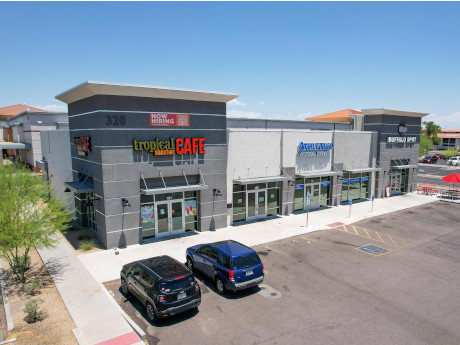— By Brian Polachek, Senior Vice President, SRS Real Estate Partners —
The holiday season is upon us, and as 2023 draws to a close the real estate community turns its focus towards the future, particularly to what 2024 holds. Let’s look at recent developments and future expectations of the Phoenix retail market, a sector that has shown remarkable growth and resilience.
Phoenix’s retail landscape has experienced a significant growth period, primarily due to a combination of factors including substantial population increases, strong consumer spending, minimal store closures and limited new retail space has been built. This surge in growth is largely attributed to Phoenix’s rising appeal as a place to live as well as a business-friendly environment. The influx of new residents and businesses has created a robust consumer base, driving up spending and providing a diverse market for retailers.
Remarkably, the Valley has seen positive absorption for nine consecutive quarters, totaling 4.2 million square feet in the past year alone. As a result, Phoenix has become one of the leading U.S. markets in retail demand, bringing vacancy rates down to a record low of 4.5 percent, according to CoStar. This ongoing demand signifies not only the market’s current strength but also points to future stability and potential growth.
Strong financial health and profitable margins have kept most national retailers stable. Consequently, there’s a limited supply of available retail space, coupled with a scarcity of speculative development, which somewhat limits expansion opportunities for both retailers and restaurants.
Consumer spending has positively impacted sales for most retailers, placing them in a sound position as we approach the new year. This profitability has enabled landlords to push rents more assertively, while tenants maintain reasonable occupancy costs. Over the past year, CoStar reports retail property rents in Phoenix have risen 9 percent, marking the city as a leader in rent growth nationwide. However, a cautious approach to the changing economic environment suggests a moderation in rent growth.
In the ever-evolving landscape of retail, one undeniable fact is that brick and mortar stores are still the primary consumer destination. The National Retail Federation reports that nearly 70 percent of total retail sales are from brick and mortar stores, despite the rise of online shopping. However, in-store shopping looks very different today than it did just a few years ago, and the hype is centered around blending both the experience and the entertainment.
The Experience: Experiential retail continues to be a driver in a lot of retail markets, and Phoenix is no exception. Retailers aim to stand out, be authentic, and remain relevant to capture the elusive attention of customers. Strategies focused on creating memorable and engaging customer experiences that go beyond mere transactions are crucial for the transformation of brick and mortar retailers.
The Entertainment: Redevelopment and new development must incorporate entertainment. Customers no longer seek the traditional store lineup they have frequented in the past. In addition to shops, developers are delivering an immersive experience that includes entertainment, live performances, innovative dining options and family-friendly attractions.
Grocery stores and fitness centers are driving the Valley’s retail market with new store openings, creating significant competition for space that has been vacated or will be vacated in 2024. The pickleball popularity has exploded, creating a demand for space throughout the Valley. It’s estimated 130 new pickleball courts are being added nationwide each month, yet this is still not enough to keep up with the demand. Several national pickleball users are either already open or are targeting Phoenix for expansion, including: Chicken & Pickle, Camp Pickle, Pure Pickleball, Pickleball Kingdom and many more.
The outlook for capital market activity in 2024 remains uncertain, but indicators suggest optimism amid cooling inflation and a robust job market. Commercial mortgage rates have exceeded 7 percent so far through 2023, nearly double the 3.8 percent rate at the beginning of 2022. Lenders have tightened their underwriting standards and increased borrowing costs, resulting in commercial property sales dropping domestically and globally.
As we look forward to 2024, a conservative construction approach is likely to continue, thus limiting supply pressures in the Phoenix retail market. The restrained building and speculative development will support property fundamentals and sustain low vacancies, although rent growth is expected to slow. This moderation is partly due to the anticipated slowdown in the broader economy, which may affect consumption and retailer profitability.
Nevertheless, the ongoing demographic growth in Phoenix is expected to maintain the Valley’s position as one of the top-performing markets nationally, supporting its long-term outlook.


